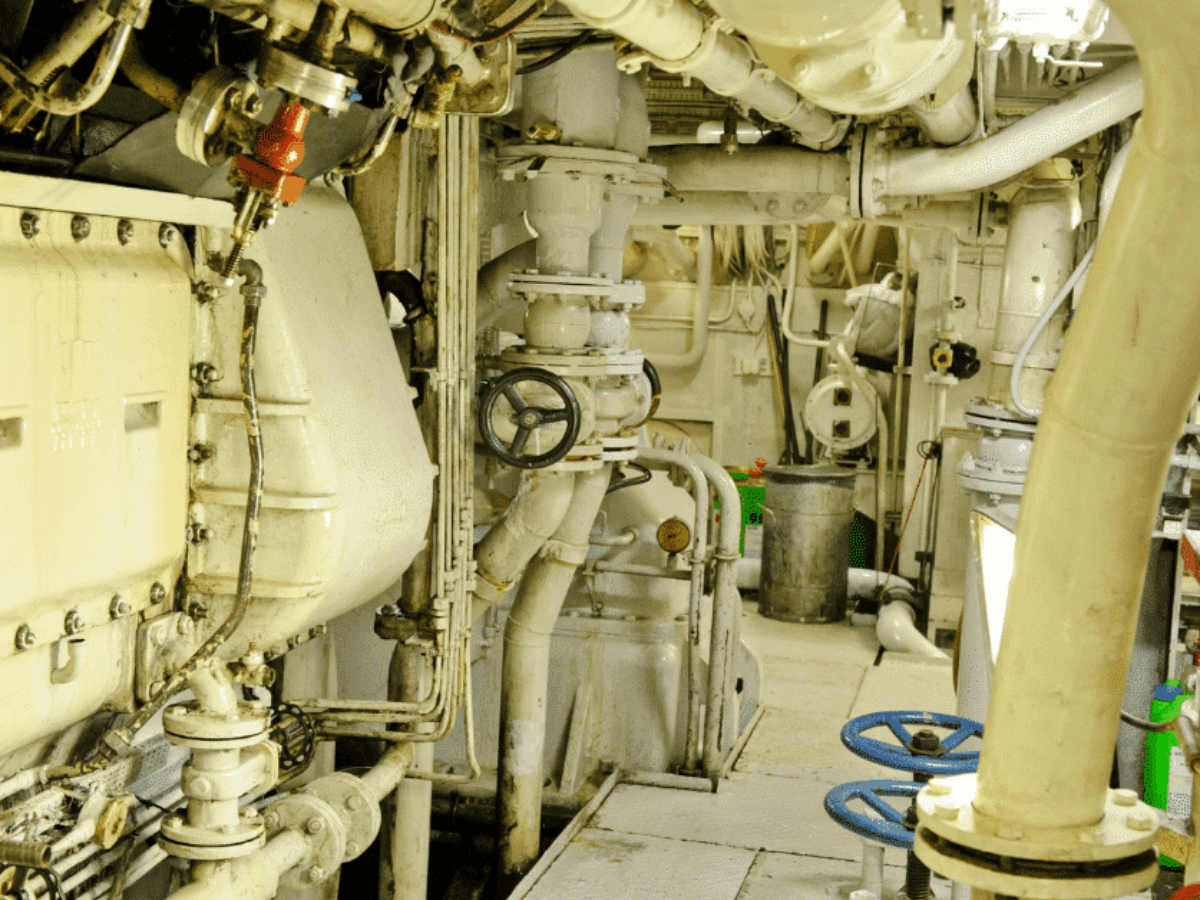Onboard Vessel Machinery Vibration Survey:
Unpredictable failure of machinery or structures of essential and critical items on ships or oil platforms usually results in large additional costs. These costs accumulate as a result of non-productivity because of the down time, manpower charges and replacement parts costs. The inconvenience is further exacerbated when new or replacement parts are not readily available, in which case the delay periods, with the accompanying loss of revenue, are extended. Clearly this is an invidious position for any shipowner or oil-platform operator.
The effects of excessive vibration on the ship’s construction include equipment failure, breaking of the bulkheads and tanks, and miserable living and working conditions. The approach for analyzing vibration readings regarding advisory limitations or for investigative reasons is narrowband frequency analysis. The frequency of each individual component of interest over the pertinent frequency range should be able to be resolved using narrowband frequency analysis.
Our expert team carries out measurement, analysis and evaluation of vibration levels onboard ships as per the requirements of ISO 10816-3 / ISO 10816-7 / ISO 10816-8 “Mechanical vibration” and class requirements during sea trials. The importance of vibration control is becoming important day by day to prevent permanent damages.
Machinery Vibration:
The vibrations that originate due to the operation of machinery can be listed under Machinery Vibrations. Any machinery that has parts moving at a certain frequency induce vibrations.
So, main engines, propulsion shafts, gearboxes, propellers, pumps, diesel generators- all machinery transmit vibrations.
Machinery Vibrations can be categorised into three types, depending on the nature of the vibrations:
- Torsional Vibration.
- Axial or Longitudinal Vibration.
- Lateral Vibration.

Vibration survey machines are categorized as:
Class I Vibration Survey: Individual components of machines that are directly connected to the entire machine while it is in its normal functioning state. Typical examples of equipment in this category include production electric motors up to 15 kW.
Class II Vibration Survey: Medium-sized machines up to 300 kW on special foundations, rigidly mounted engines, or machines (usually electrical motors with 15 to 75 kW output).
Big prime movers and other large machines with rotating masses mounted on heavy, robust foundations that are somewhat stiff in the direction of vibration measurement are classified as Class III machinery.
Large prime movers and other large machines with rotating masses situated on relatively soft foundations in the direction of vibration measurement are classified as Class IV machines (for example turbo-generator sets, especially those with lightweight sub-structures)
Common advantages of our noise and vibration services:
- Stay away from costly remodelling.
- Reduce vibration and noise levels on board already-operational ships and offshore equipment.
- obey all laws, rules, and regulations.
- Make sure the workplace is comfortable.
- Avoid vibration-related technical issues.
Relevant Standard:
- Broadband (rms vibration energy power) and narrowband (spectrum, time waveform, demodulation and phase) analysis was performed. The following standards was used:
- ISO 10816-3 “Mechanical vibration — Evaluation of machine vibration by measurements on nonrotating parts — Part 3: Industrial machines with nominal power above 15 kW and nominal speeds between 120 r/min and 15 000 r/min when measured in situ”.
- ISO 10816-7 “Mechanical vibration — Evaluation of machine vibration by measurements on nonrotating
- parts — Part 7: Rotodynamic pumps for industrial applications, including measurements on rotating shafts”
- ISO 10816-8 “Mechanical vibration — Evaluation of machine vibration by measurements on nonrotating
- parts — Part 8: Reciprocating compressor systems”
- ISO 8528-9 “Reciprocating internal combustion engine driven alternating current generating sets –
- Part 9: Measurement and Evaluation of mechanical Vibrations.”
- Ship Vibration and Noise Guidance Notes – Lloyd’s Register
Classification of severity based on international standards is defined as follows:
- Critical: Machinery rated unacceptable is normally considered to have a severe problem. Generally, the machinery should not operate until inspection or remedial action performed.
- Marginal: Machinery rated as marginal is normally considered unsatisfactory for long-term
- continuous operation. Generally, the machinery may be operated for a limited period in this condition until a suitable opportunity arises for remedial action.
- Normal with observation. Machinery rated satisfactory with observation require monitoring of operation but is suitable for long-term continuous operation. Further remedial actions to be undertaken in case of poor performance evidence or to be scheduled based on recommendations.
Our Company’s key features are:
- Experienced and Qualified staff
- Well calibrated advanced instruments for accurate readings
- Ultramodern techniques
- Timely executing
- Competitive price
- Ensures complete satisfaction
- Appreciated by our previous clients

